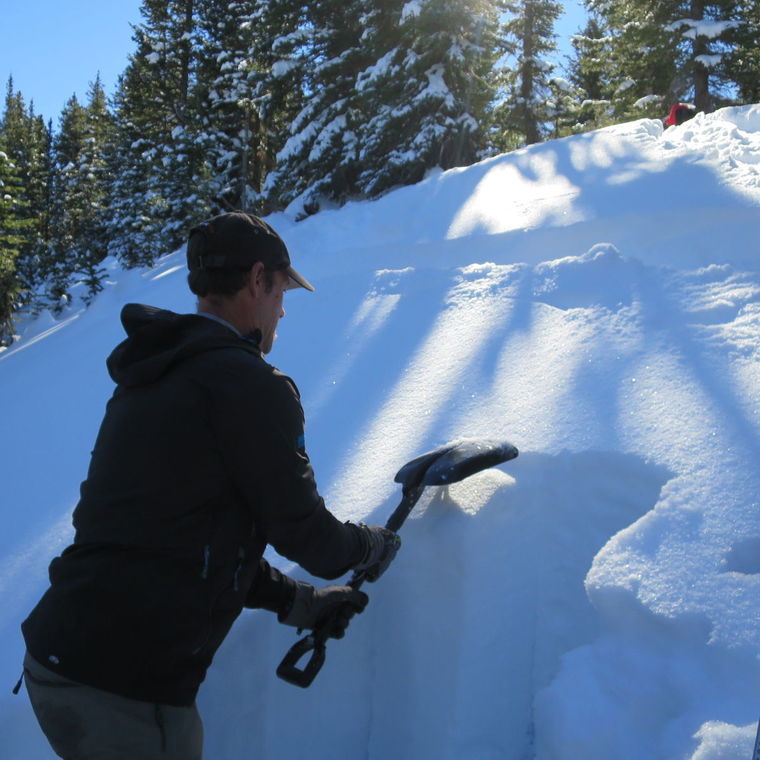KBYG is not the newest radio station in town.
It’s an acronym that stands for “Know Before You Go,” and if you’re a backcountry skier or snowmobiler, the basic principles behind those four letters could save your life.
On Thursday, Dec. 17, at 6:30 p.m., the Utah Avalanche Center and the Manti-La Sal National Forest will be hosting a free Know Before You Go presentation at the Grand County Public Library, 257 E. Center St.
The hour-long event will begin with a new video from the Utah Avalanche Center, and will then continue with a slide show that teaches people how to stay safe in avalanche country.
“The point of this class is not to tell people, ‘The mountains are dangerous — don’t go there,’” Utah Avalanche Center forecaster and Know Before You Go presenter Eric Trenbeath said. “It’s to learn how to recognize when it’s dangerous.”
The presentation aims to hammer home a straightforward, five-pronged message: get the gear, get the training, get the forecast, get the picture and get out of harm’s way.
“It’s low on science,” Trenbeath said. “We’re not going to really go into a lot of the details and phenomena about avalanches.”
Longtime Utah Avalanche Center volunteer Evan Clapper, who will soon teach his first class as a certified American Institute for Avalanche Research and Education level 1 instructor, said the video is likely to get viewers’ attention. It includes scenes that Teton Gravity Research and the Red Bull team shot as they traveled around the world documenting the exploits of extreme outdoor athletes.
“Instead of a boring slide show, there’s footage of high-octane action,” Clapper said. “It’s a little more compelling.”
Know Before You Go began in 2004 as a program for middle school and high school audiences, although it has since expanded its mission, and has reached tens of thousands of outdoor recreationists in Utah and other Western states.
In the past, skiers and snowshoers made up the bulk of Know Before You Go audience members, but increasingly, Trenbeath said that more and more snowmobilers are showing up, as well.
The Know Before You Go message is an especially important one for snowmobilers to hear, he said, since they are more likely than any other group of backcountry recreationists to die in an avalanche.
“That’s because the machines are so powerful nowadays, and people’s riding abilities far exceed their avalanche awareness skills,” he said.
Avalanches occur naturally. But more than nine times out of ten, Trenbeath said that avalanche victims will set off an avalanche themselves, or else someone in their group will.
Most avalanches are triggered when the danger is rated moderate or considerable – not when conditions are more extreme, and people are far more likely to steer clear of the mountains altogether.
Learning to recognize avalanche terrain is key, Trenbeath said, pointing out that the danger is greatest on slopes that are sharper than 35 degrees – or roughly as steep as an expert-level run at a downhill ski area.
The current avalanche danger on those slopes is rated considerable, and only experienced backcountry travelers should venture into areas where the terrain is steeper than 35 degrees.
Utah’s biggest snowstorm in the last two years passed through the La Sals at the start of this week, dumping at least 2 feet of low-density snow in the mountains.
“Today is a very good day to scale it back, stay off of, and out from under, steep slopes until the new snow has had time to stabilize,” Trenbeath said on Tuesday, Dec. 15.
Visitors should also be aware that congestion at the Geyser Pass trailhead is an ongoing concern; Trenbeath encourages them to seek out other areas in the La Sals.
While Gold Basin is closed to motorized recreation, the rest of the mountain range is wide open, and Trenbeath said the La Sal Pass area in particular features better terrain for snowmobilers. However, some of those hills are avalanche-prone, so users need to be aware of the current danger before they go.
If people do choose to visit the Geyser Pass area, Trenbeath asks them not to park their cars at the bottom of the hill where others go sledding.
Trenbeath and Clapper are tentatively planning to hold a more detailed avalanche awareness class on Saturday, Jan. 16, 2016. The $100 fee for that class and a day out in the field will benefit the center – a nonprofit organization that partners with the U.S. Forest Service.
Know Before You Go presentation set for Thursday, Dec. 17
“The point of this class is not to tell people, ‘The mountains are dangerous — don’t go there.’ It’s to learn how to recognize when it’s dangerous.”
When: Thursday, Dec. 17, at 6:30 p.m.
Where: Grand County Public Library, 257 E. Center St.
Cost: Free
To read the Utah Avalanche Center’s latest advisories for the La Sal Mountains, go to utahavalanchecenter.org/advisory/moab. For more information about the Know Before You Go program, go to kbyg.org.




